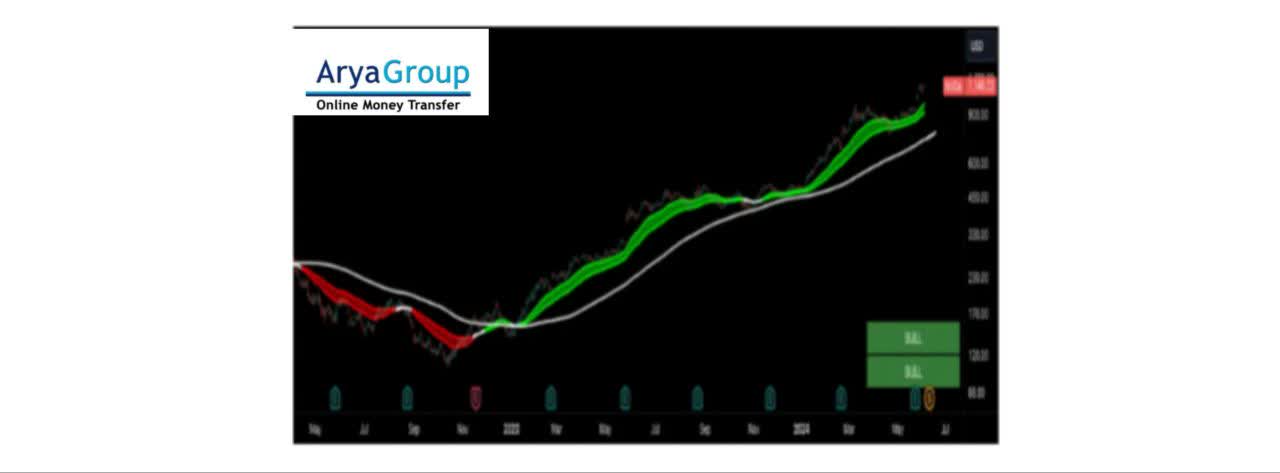Indicators In TradingView

Indicators encompass all the technical indicators offered by TradingView, and there is an extensive selection available. You will find a wide range of indicators here. In addition to the fundamental indicators that are widely recognized, TradingView also includes a comprehensive array of custom indicators developed by its user community.
When the tab is opened, it displays four mini tabs, each featuring a distinct set of tools and indicators. The most common indicators can be found under “Built In’s” at the top, including MACD, Moving Averages, and Relative Strength Index, along with other popular options.
The custom library showcases the previously mentioned custom indicators.
To modify the settings of an indicator, right-click on the line or graph (depending on the indicator) and select the “Settings” button. A small menu will appear with all the adjustable settings. The available changes vary by indicator, but crucial modifications are generally supported. Additionally, colors and display settings can be altered by clicking the “Display” tab within the settings menu.
For those interested in creating or editing their own indicator, the My Scripts button can be used.
The Volume Profile indicator is exclusive to pro account holders. It offers an advanced perspective on volume by plotting it vertically on the right side of the chart, allowing users to observe volume accumulation at various price levels. It is similar to market profile and may not be essential for price action traders, but could be beneficial for those who analyze volume.
The next section is the Financials tab, which is primarily useful for stock traders, so it may be skipped if focusing on forex. This tab displays key financial metrics about a stock, such as earnings, debt, and cash flow, and presents the release of each figure in a separate graph beneath the chart for easy visualization of changes over time. For those involved in stock trading or investing, this tab facilitates the monitoring of fundamental analysis trends.
The menu displays all the key financial information, and users can easily navigate between them by clicking the tabs on the left. If you dislike having to reapply your studies (indicators, financials, etc.) each time you open a new chart, you can use the Templates button to save your current chart layout as a template. By selecting this template when opening a new chart, all your studies will be reapplied with your saved settings instantly. Three default templates featuring the most popular tools and indicators are available, but creating a custom template is advisable for greater flexibility. It is important to note that the free version of Tradingview allows the saving of only one template, so make your choice carefully. The Alerts feature enables users to set alerts as needed.
TradingView offers a vast array of options for creating and customizing alerts, as demonstrated above. Alerts can be set for various scenarios, such as when support and resistance levels are reached, when news events occur, or when indicators cross specific thresholds. Users can also receive alerts via phone or email, ensuring they stay informed while on the go.
It is important to note that SMS alerts require a paid account, while email alerts are free.
Setting an alert is straightforward and can be done in two ways. The first, more convenient method, involves right-clicking on the price, technical indicator, or level where the alert is desired and selecting the "Add Alert" option from the menu. TradingView will then create the alert automatically. The alternative method involves accessing the Alerts tab and manually inputting all necessary information.
To view all active alerts, simply click on the alarm clock icon located in the right menu.
Prior to discussing the right side of the menu, it is important to mention the Market Replay button. This feature is exclusive to Pro accounts. Market Replay allows users to rewind the market and replay it in real time, similar to watching a video. It is frequently utilized to review past trades in order to analyze successes and failures, as well as identify areas for improvement. Additionally, the Undo and Redo buttons (11) are available for correcting mistakes, similar to word processing software—this aspect is often overlooked. Now, let's proceed to the right side of the main tab.
These five options may not be frequently utilized, but they offer some interesting features worth being aware of. For instance, if you wish to modify the chart layout to display one currency alongside another or to show a different timeframe in conjunction with another, you can click the small square button (12). TradingView provides various layout types; however, access to all of them requires a paid subscription.
Next to the square button is labeled "Unnamed" with a downward arrow beside it. This feature allows you to save your current chart, including all indicators, lines, drawings, tools, etc. TradingView stores all your charts in the cloud—indicated by the icon—enabling easy switching between them. Simply click the arrow to save and load your charts.
It is advisable to keep the Auto-saving feature enabled to avoid losing your analysis if the chart is closed. The small Cog button opens the chart settings menu, as previously mentioned. To maximize the chart window, click the icon with four expanding arrows. If you wish to capture a screenshot of the chart, perhaps for sharing in a forum or chatroom, click the small camera icon located to the right.
With the Publish feature, you can share your analysis on TradingView for others to see. Click the button to open the idea window, where you can enter your idea or title for the analysis—such as "Eur/Usd Breaking To New Highs"—and provide a description of your predictions in the text box below. Once approved, TradingView will publish your analysis on the Ideas page for that currency pair.
 English
English
 فارسی
فارسی

Add New Comment